
Christmas is coming, and all around the country ethical shoppers face a dilemma: should they get a Christmas tree and if so, what is the best option? This guide will help you find the most ethical and sustainable Christmas tree for your home during the holidays.
Since Prince Albert introduced German Christmas traditions to the British Isles in the 19th Century, many of us have brought trees into our home to decorate for the festive season. By the middle of the 20th Century, artificial trees began to proliferate, but now many people are again returning to the real thing. 🎄
For many, Christmas wouldn’t be the same without a tree covered in twinkling lights and baubles in the living room. Unfortunately, both artificial and natural Christmas trees come at a cost to the environment. Let’s take a look at why these options might not be the most ethical choices, before progressing to other choices you might want to consider.
The Problem with Artificial Christmas Trees
Artificial Christmas trees are generally the cheapest choice. Being reusable year after year, they are generally more economical, long term, than buying a new cut tree annually. An ‘urban myth’ (largely propagated by manufacturers) even claims that artificial trees, if kept for years, can be equally, or even more environmentally friendly than real trees.
Unfortunately, the materials used to make most artificial trees are hugely problematic from an environmental perspective. And the claim of superior sustainability simply has no basis in fact for the majority of artificial trees.
The Carbon Trust estimates that a two metre artificial tree has a carbon footprint of around 40kg of CO2e (carbon dioxide plus other greenhouse gases’ warming potential) – more than twice that of a real tree that ends its life in landfill, and more than ten times that of real trees that are burnt.
Most artificial trees are made from plastic – most often PVC film. Like other plastics, PVC is made from fossil fuels, a process that emits high levels of greenhouse gases. Around two thirds of the carbon footprint of an average artificial Christmas tree comes from the plastic it is made from; the metal frame, and transportation, also take a lot of energy – not usually green.
Most artificial Christmas trees on the UK market are made in China. While shipping is slowly becoming more efficient, some still arrive by air, and there is still a significant carbon cost associated with transporting any goods from so far away. Additionally, workers’ health and safety in China is often not a high priority.
Further reading: “Inside the ‘Christmas village’ of Yiwu, there’s no snow and no elves, just 600 factories that produce 60% of all the decorations in the world.” (The Guardian)
PVC production results in the release of a number of known carcinogens, including dioxin, ethylene dichloride and vinyl chloride. Though standards and practices are gradually improving, the plastics industry is far from perfect and many environmentalists feel it would ultimately be better to not produce it at all.
In the past, lead was often used as a stabiliser in the manufacture of artificial trees’ needles. Known to have a range of harmful effects on human health, this lead can pose a danger not only to workers, but also to consumers. Though the use of lead for this purpose is now prohibited in Chinese law, with most companies making artificial Christmas trees now using tin instead, this is something to consider if using or sourcing an older artificial tree.
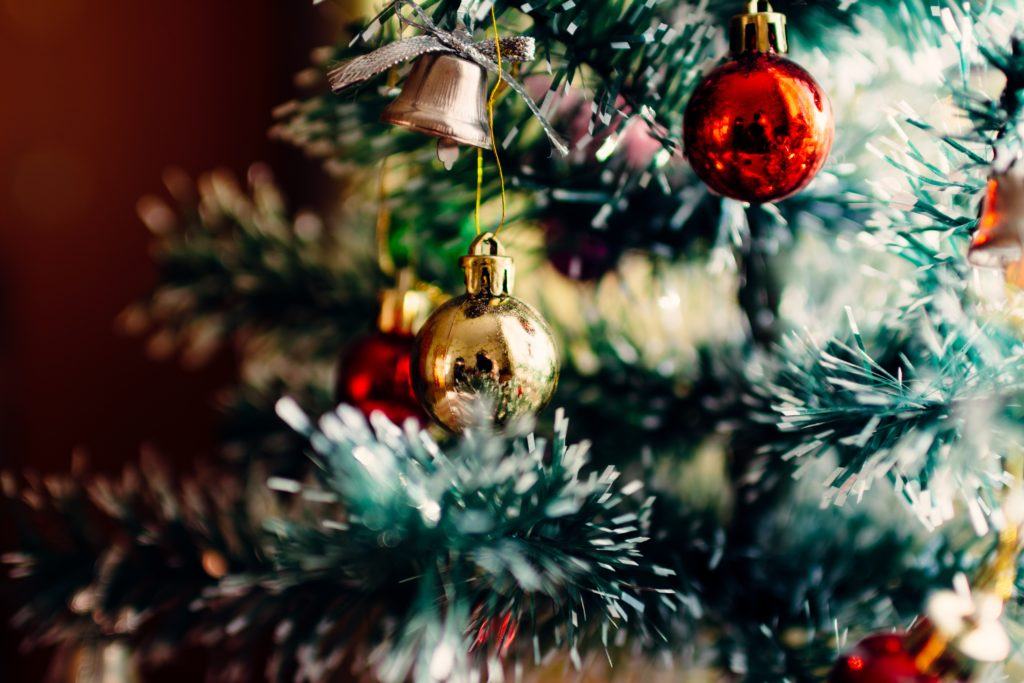
In 2008, a US Environmental Agency report found that the PVC in artificial Christmas trees degrades as it ages, leading to dangerous levels of lead contamination after nine years or so. So though choosing an old or secondhand tree is better for the environment, it may not be a good decision for your health.
It is difficult to find an artificial Christmas tree that is 100% free of PVC. However, costlier artificial trees contain a higher percentage of PE (polyethylene), which, though still a petrochemical plastic, is somewhat safer that PVC. If you must buy an artificial tree, choose one with as much PE as possible. (Though manufactured at a greater carbon cost, higher-PE trees feature the most realistic artificial pine needles, so can look more like the real deal.)
Of course, even artificial trees do not last forever. Since plastics do not biodegrade, instead lingering and contaminating the environment, disposing of them is a major problem. While PVC can be recycled, most Christmas trees are made up of composite materials, and so cannot be easily recycled at the end of their useful lives.
We’ll talk about what to do with an artificial tree that you no longer want or need a little later in this article. But if you do not already have one, it is best to avoid them altogether and consider other options instead.
Why a Cut Tree Might Not Be the Most Ethical and Sustainable Option
So, if not going for a plastic, artificial tree – what to go for? For around eight million households in the UK each year, the answer is: buy a real, cut tree.
In terms of carbon footprint, this is undoubtedly a far better option than an artificial one; the Carbon Trust states that, if it ends up in landfill, a two metre tall natural Christmas tree, without roots, has a carbon footprint of 16kg of CO2 over the course of its lifecycle. Burning the tree – or better yet, using it as mulch, etc, – reduces this footprint by up to 80%. (We’ll look at how best to dispose of a real Christmas tree later in the article.)
Many people, quite rightly, worry about chopping down any trees at all – but it is worth remembering that, at any one time, about 100m trees are growing in the UK for the Christmas market. And that number means that around three quarters of all the real trees put up for Christmas in the UK will have been grown here; this at least cuts the carbon and other environmental costs of transportation. If you do opt for a cut tree, it is important to make sure that it was grown as locally as possible. However, as The Guardian article at the link above points out: all cut trees are imperfect from an ecological standpoint.
👉 Christmas tree plantations are fairly good at replacing the trees that they cut down, and many are certified under the FSC system. But – though you should always look for the FSC logo when buying any trees, timber, paper, or other forest products – the FSC system is far from perfect; do not rely on this logo alone to make ethical choices when it comes to your Christmas tree. It is also important to remember that, whether or not they are ‘sustainably managed’, Christmas tree plantations are not an ecologically sensitive use of land.
Christmas tree plantations are not like natural forests; they are mono-crop systems. And like other mono-crop systems, they generally require the use of controversial herbicides and pesticides (such as glyphosate). While residues may not remain on trees by Christmas, the jury is still out on their effects on human health. Their negative impacts on the environment, however, are increasingly clear (run-off into waterways; ecocidal effects on insect life, etc.) – therefore, if you do choose a cut tree, the most ethical and sustainable options are those which are certified organic.
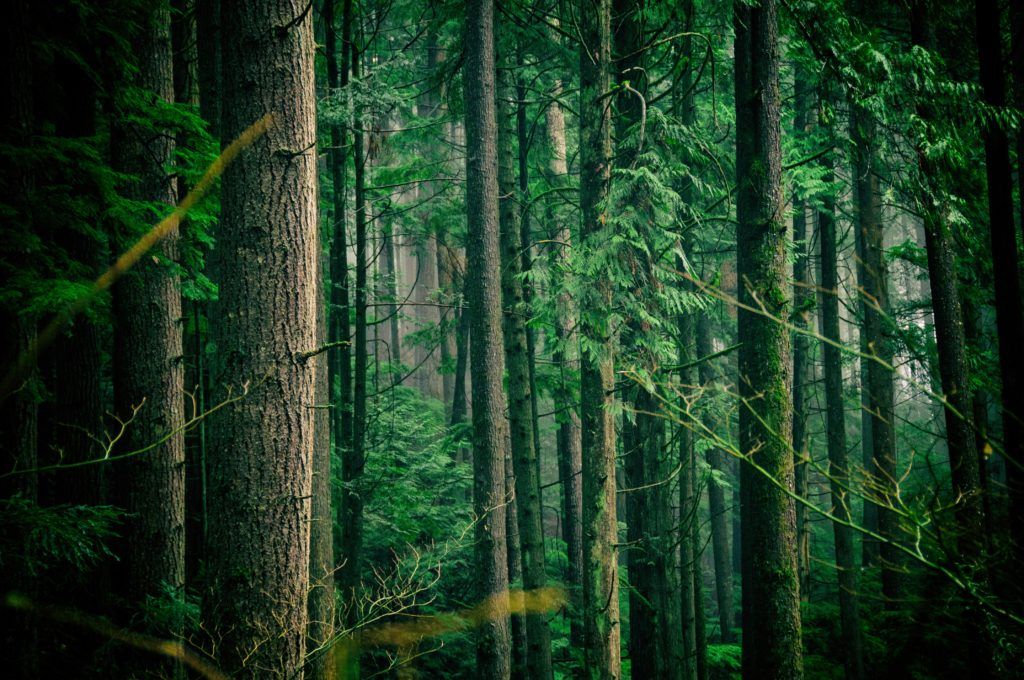
Mono-crop tree plantations have nowhere near the same ecological benefits as real re-foresting. Yes, Christmas tree plantations do sequester carbon, but they do not have the benefits to wildlife or the wider ecosystem of real woodland and real forest. True forests are more than just trees: they are complex systems of interconnected plant, animal, insect, and fungi life. Arguably, even when growing, Christmas tree plantations have a net negative impact, since they take up valuable land that could otherwise be used more productively for people and planet.
Much of the UK, if left undisturbed, would revert to woodland or forest. However, only 13% of the UK’s total land area is covered with trees (19% in Scotland, 15% in Wales, 10% in England, and only 8% in Northern Ireland). Increasing areas of native woodland and forest would make a major impact in mitigating global warming.
Even if you can find a real, organic, cut tree that was grown as part of a rich, ecologically diverse and sustainably managed forest, chopping down these trees each year is still inherently wasteful. Why not simply create real, thriving forests and leave these intact? That, surely, is a preferable ethical choice.
Is a Living Tree the Answer?
If you aren’t prepared to sacrifice having a Christmas tree in your home, a growing, living tree may be the answer. This, without a doubt, is the most ethical and sustainable option. It is increasingly possible to find real trees in pots which can be brought inside in winter, then nurtured in the garden until the next Christmas.
Christmas trees in pots differ from those that are cut down in not monopolising large areas of land. Generally speaking, potted Christmas trees are grown in dedicated nurseries, often as a side-business on a smallholding or farm, purchasing from whom can help them to diversify and make a profit. As above, when choosing a Christmas tree in a pot, it is important to select one from as close to home as possible, and, ideally, one that is certified organic.
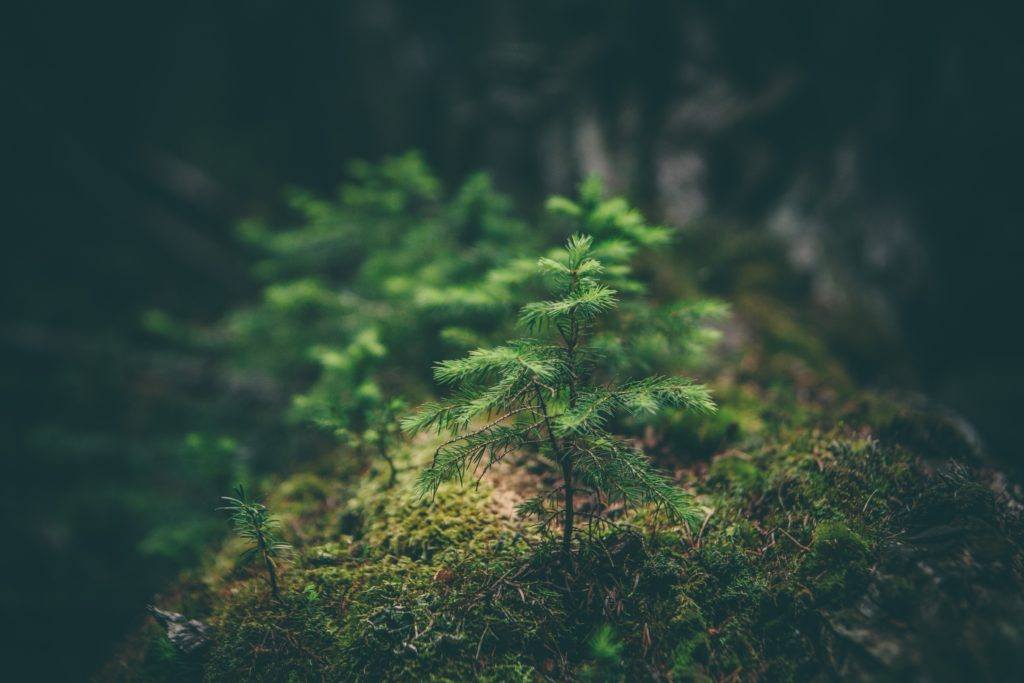
It would also be good to find out where the tree’s seed was sourced, as, even when locally grown, these can frequently come from as far afield as Russia, the US, and, most frequently, Georgia – where issues have been raised over worker conditions, and a lack of fair trade. So even pot-grown trees reared in the UK may have a dirty secret.
If choosing a pot-grown tree, it may not be as large as other options, since there is a limit to how large a potted tree can become. But bigger does not always mean better; some of the best and most ethical Christmas trees are little ones that take up hardly any space.
But, a tree that keeps on growing is a great way to do your bit for the planet: each and every tree planted can make a difference. Though putting the living tree in your garden and tending to it throughout the rest of the year will require a little time and effort, if you have the space it could be a great ethical solution.
Bearing in mind issues around seed, you could even source ethical seed and grow your own Christmas tree from scratch. Unfortunately, if you do this you will have to be patient; Christmas trees are typically around 10 to 15 years old!
But What If You Don’t Have a Garden to Keep the Tree In?
If you have an allotment, perhaps you could keep your living Christmas tree there? If you don’t have a garden and want somewhere to grow food, etc, check out the options in your area. Some places have a long, long waiting list – while in others plenty of growing space may be going begging.
Otherwise, why not consider keeping your living Christmas tree in someone else’s garden? Do you have a friend, family member, or neighbour who might be willing to ‘adopt’ your tree until next Christmas? If you really want a living Christmas tree, but don’t have the space for one yourself, it could be a question worth asking.
Or, if you want to try something a bit different, consider purchasing a bonsai tree or other small shrub or houseplant, and decorate that for Christmas. Such a plant could be kept indoors throughout the year (but would still require some careful tending).
What to Do with Your Tree after Christmas
Whether you ultimately opt for an artificial, cut, or living tree, this choice is only one part of the sustainability picture. What you do with your tree after Christmas will have a huge bearing on how ethical and sustainable your decision will ultimately be.
Disposing of an Old Artificial Tree
If you already own an artificial tree, it’s best (health caveats in mind) to keep it as long as possible; the longer it is used, the longer it can be kept from landfill.
If you simply no longer want the tree, try to donate or pass it on rather than throwing it away. It may well still be wanted by someone else; try local charities, care homes, schools, or charity shops, or pop it on Freecycle, Freegle, or Gumtree.
If the tree is showing its age, check whether your local authority offers an artificial tree pick-up service around Christmas.
Alternatively, providing it is not unhealthy to do so, upcycle its component parts into new decorative items for your home. For example, you could turn the branches of the tree into wreaths, garlands, or wall hangings for any season. You may also be able to utilise parts of the metal framework for a range of DIY jobs or craft projects around your home. 🌟
Having reclaimed the reusable parts, take the remainder down to your local recycling centre. Make sure to remove all lights and decorations first. If possible, increase the amount that can be recycled by separating the plastic parts from the metal framework. Though the plastic is not usually recyclable, the metal parts likely will be, and can be placed in the metal recycling container.
Disposing of a Cut Christmas Tree
As mentioned above, how you dispose of a cut Christmas tree will have a huge bearing on its overall carbon cost. Millions of real Christmas trees end up in landfill each year; this is problematic because organic matter sent to landfill decomposes anaerobically and creates methane, a potent greenhouse gas.
Fortunately, it is now relatively easy to recycle your trees, since many local authorities will collect cut trees after Christmas (or have a special facility where they can be taken). Shredded into chippings they become a useful mulch that can protect soil and return nutrients to the system in parks and local woodland areas.
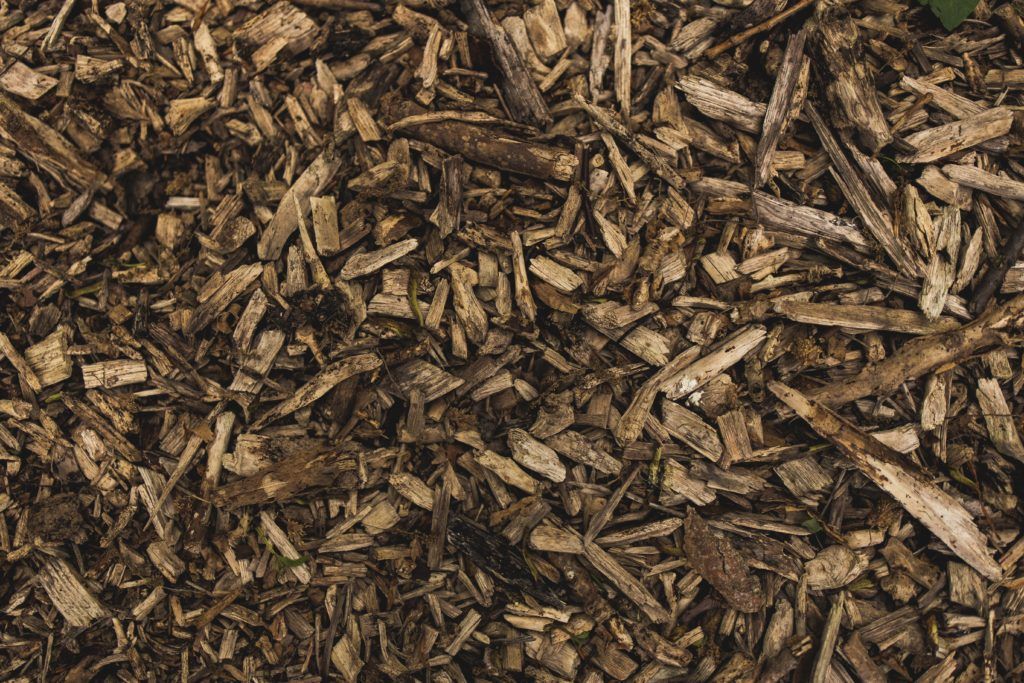
Put your postcode into the local recycling widget at recycle now to check local facilities. You should also be able to find out more through your local council website.
If you have a garden and like to take a more DIY approach, it is possible to recycle your real cut Christmas tree yourself:
- Strip the needles to create a fragrant pine-scented pot pourri for your home, or an acidifying mulch for ericaceous (acid-loving) plants like blueberries, camellias or rhododendrons.
- The branches and trunk can be made into chippings with a garden shredder, for use on paths, or as a mulch around mature trees and shrubs.
- Even without a shredder, you could saw up the tree to make a range of useful things for your garden, for example, log lengths to use as path or bed edging.
- Branches can be made into an out-of-the-way brush pile as shelter for local wildlife.
- Smaller twigs and branches can become part of a bug hotel to help the smaller creatures who share your garden.
- Even without a garden, the wood could potentially still be used in a number of artistic or craft projects! 🙌
Dealing with a Living Tree after Christmas
As mentioned above, a living tree can be the most ethical and sustainable option. However, it becomes far less sustainable if you do not look after it; remember, the benefit of a living tree is keeping it alive for use year after year.
After Christmas, it is beneficial to take your tree out of its pot and replace the soil with a fresh growing medium. This will ensure a good supply of nutrients to see the tree through the coming seasons. If you want your tree to grow taller for next year, either re-pot it into a larger container, or transplant it into the ground.
Though living trees can be grown on in either pots or the soil in your garden, it is important to consider their needs, and the conditions where you live. Some soil types and conditions may not be ideal, meaning container growing will be the best option. However, remember that trees in pots will need watering and feeding more often than trees in the ground. 🌲
Do You Need to Buy a Tree at All?
Of course, it isn’t necessary to buy any sort of Christmas tree at all. Before buying anything, it is always worth asking yourself whether you really need to make that purchase at all.
But, choosing not to buy a Christmas tree doesn’t mean forgoing Christmas decoration all together! You may even still be able to have a ‘Christmas tree’ of some description, even without buying one.
Renting a Christmas Tree
The first option to consider is renting a Christmas tree instead. Christmas tree rental is the latest ‘in thing’ on the Christmas market, and many garden centres, plant nurseries, and other growers are getting in on the act. Renting a Christmas tree is a great option – especially for those without garden space in which to plant a living tree after the festive season. After Christmas, simply return the tree, and it will be replanted in the ground, where, of course, it will continue to take in carbon, provide a home to wildlife, or otherwise enrich the environment. Though not ideal, at least this is a preferable alternative to landfill.
If you want to rent a tree, options depend on where in the UK you live. Here are a few examples:
New Christmas tree rental options are popping up all over the place, so check out local sellers to see whether they are also offering this service.
Decorating Branches
Another option to consider is using cut branches to create a framework from which to hang decorations and lights. If you have a garden, use pruned branches from fruit trees or other trees or shrubs. If you don’t have a garden, you may be able to forage for a few fallen branches and sticks in your surrounding area.
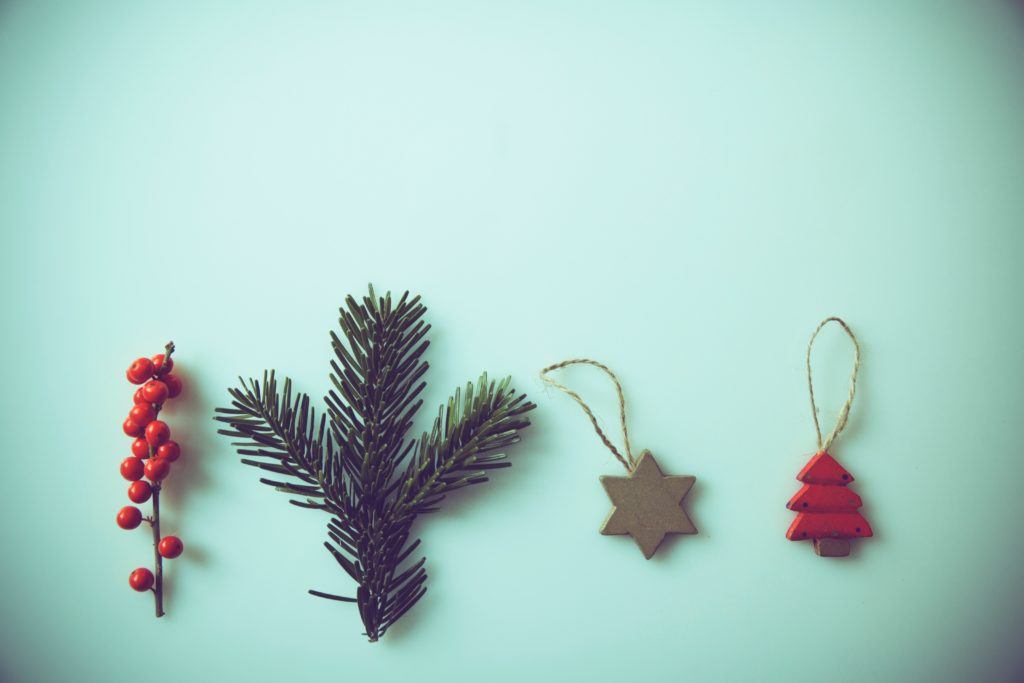
Bare winter branches arranged in a vase or other receptacle can look just as impressive as an actual tree. But not only will they cost less (you can find them for free!), by divesting support from damaging systems, this option will also be a good choice for the environment, as well as giving your creativity free rein.
Another advantage of decorating bare branches rather than a Christmas tree is that it is suitable for those with allergies to real trees. No dropped needles to clear up, either!
Upcycled and Hand-Crafted ‘Christmas Trees’
There is another alternative that can work well for those with allergies, or for those who can’t be bothered taking care of a living tree: consider making a ‘Christmas tree’ shape or a structure from which to hang lights or decorations.
There are plenty of different DIY Christmas tree ideas online. For example, you will find ideas to make a Christmas tree shape from:

- Natural or reclaimed wood
- Driftwood and shells
- Cardboard, paper, or old magazines
- Recycled fabrics and old coat-hangers or metal frames
- Reclaimed mechanical parts
- Empty glass or plastic bottles
- Old drinks cans or tins.
With a little imagination, you can make a range of eco-friendly alternative ‘Christmas trees’ or decorative structures, using natural materials or materials that might otherwise have been thrown away. Plus, as well as reducing waste, many of these ideas won’t require you to buy anything at all!
Edible ‘Christmas Tree’ Ideas
Another cool way to bring the concept of a Christmas tree to life, but without actually buying one, is to make a tree-like decorative display from edible ingredients.
An edible Christmas tree shape could be made from:
- Cookies
- Gingerbread
- Cupcakes, muffins, or brownies
- Breadsticks
- Cake carved into a Christmas tree shape, or in tiered layers.
Of course, such a ‘Christmas tree’ would have a limited shelf life. But it could be a great way to create a temporary display in your home during the festive season. And of course, there is the added benefit of getting to eat the display once you have enjoyed it!
Bringing Cuttings Indoors to Decorate Your Home
If you miss the natural vibe and pleasing scent of a real Christmas tree, consider decorating cut evergreen branches and leaves instead. Holly, ivy, and mistletoe are traditional options, of course, but a wide range of other evergreen plants could also be used.
Instead of a tree, your home could simply be festooned with garlands, wreaths, and other decorations made from evergreen foliage and bright red berries. You may find plenty of beautiful plant material in your own garden, or in the surrounding area. The benefit of decorating with cuttings rather than a whole tree is that these don’t kill the plant; take Christmas cuttings carefully to avoid affecting the plant’s overall growth, allowing it to continue doing its thing out there in the natural world.
Ethical and Sustainable Decorations for a Christmas Tree
No discussion of Christmas trees would be complete without addressing the ornaments that decorate them.
Whether you choose to buy a tree, or opt for some of the alternatives mentioned above, your efforts to make the right choice will be in vain without thinking about decorations too. All too many people choose decorations that are far from ethical and sustainable.
Most of us now use LED lights on our trees, which is a step in the right direction. But this year, think about going even further and banishing all plastic from your tree. For example, many people are unaware that tinsel, made from plastic composites, cannot be recycled. Don’t buy it!
In fact, divest from tinsel, fake snow, plastic baubles, and all other tacky plastic tat. Also be cautious about ‘biodegradable plastic’ options, since these are not always truly compostable and can still create problems in the environment. Instead, decorate your tree or other parts of your home with ethical and sustainable decorations, such as:
Natural Tree Decorations
If buying Christmas tree decorations, choose options made from natural materials, such as hand-carved wooden or hand-made ceramic ornaments, or other beautiful hand-crafted decorations made with skills you don’t have yourself. As with any purchase, choose options made sustainably, and without harmful materials, which come from as close to you as possible.
Decorations Crafted with Natural Materials
You definitely don’t need to buy decorations, however, in order to have a beautiful home this Christmas. A wide range of natural materials can be used to decorate your tree in an eco-friendly way. And many of these options can be crafted with minimal time , effort, or even know-how! For example, you can:
- Replace strands of unsustainable tinsel with strings of dried cranberries or other berries, and strings of popcorn. You could also string a range of seeds and fruit stones or pits to make natural garlands for your tree.
- Make strings or garlands using felt pom-poms, ivy, or other natural foliage.
- Use twigs and natural twine to make hanging decorations in the shape of a tree or star.
- Weave Christmas tree decorations from willow or other flexible green wood or bark.
- Dry flowers or foliage of different colours and shades to make decorations from.
- Colour eggshells with natural dyes and blow out the contents to make beautiful delicate ornaments.
- Use seashells, mussel shells, sea glass, pebbles, and other foraged items.
- Saw discs from logs or branches and burn designs into these with pyrography.
- Knit or crochet decorations using sheep’s wool or other natural fibres.
These are just a few examples of the almost endless ways to use natural materials to decorate your tree.
Decorations Crafted with Upcycled Materials
Even without using natural materials, there are plenty of ways to make your own Christmas tree decorations. Even things from your home that might otherwise have been sent for recycling or thrown away can be used – for example, consider:
- Creating festive origami decorations from scrap paper, old magazines, or card.
- Making fun family decorations in the shape of angels, Santa, a reindeer, a snowman, etc, out of toilet roll tubes.
- Sewing ornaments from scraps of old fabric.
- Making strings of old buttons and beads from your sewing box or charity shop finds.
- Upcycling small glass jars to make a unique alternative to Christmas baubles.
- Making shiny metal decorations from tin cans.
- Making little ornaments from old bottle caps.
- Creating a sparkling bauble with old ring pulls.
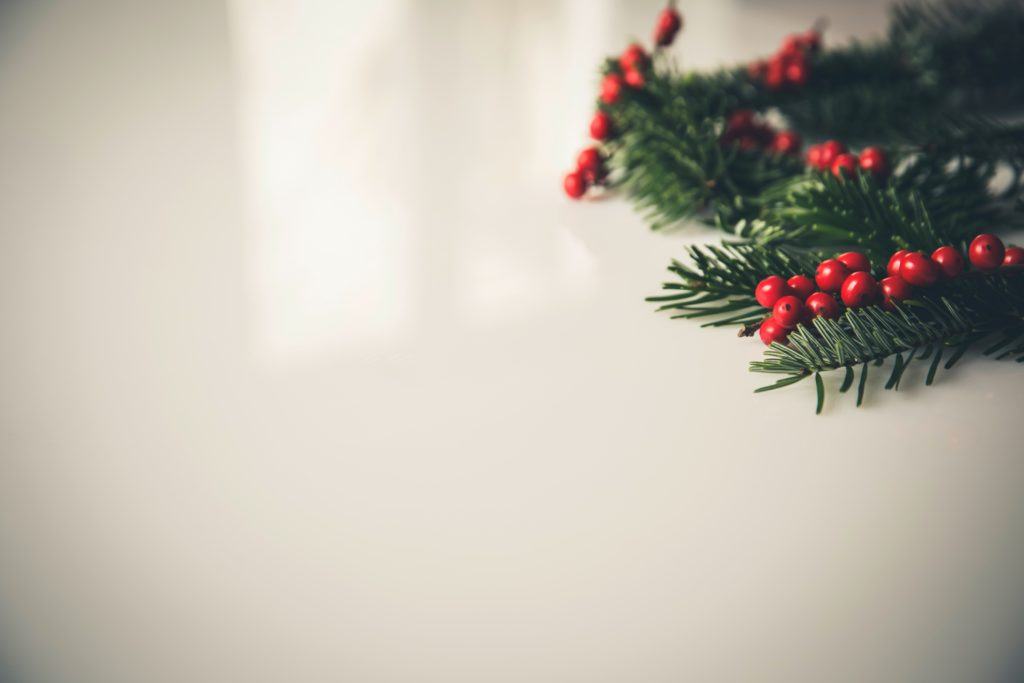
Again, there are almost endless options to consider. When it comes to turning trash into Christmas treasure, nothing will limit you but your imagination.
This year, think through all your Christmas choices. Choose the right tree (or whether to have one at all), decorate your home using natural, sustainable options, and reduce waste in all its forms over the festive season.
Featured image by Debby Hudson on Unsplash
Earth.fm is a completely free streaming service of 1000+ nature sounds from around the world, offering natural soundscapes and guided meditations for people who wish to listen to nature, relax, and become more connected. Launched in 2022, Earth.fm is a non-profit and a 1% for the Planet Environmental Partner.
Check out our recordings of nature ambience from sound recordists and artists spanning the globe, our thematic playlists of immersive soundscapes and our Wind Is the Original Radio podcast.
You can join the Earth.fm family by signing up for our newsletter of weekly inspiration for your precious ears, or become a member to enjoy the extra Earth.fm features and goodies and support us on our mission.
Subscription fees contribute to growing our library of authentic nature sounds, research into topics like noise pollution and the connection between nature and mental wellbeing, as well as funding grants that support emerging nature sound recordists from underprivileged communities.
